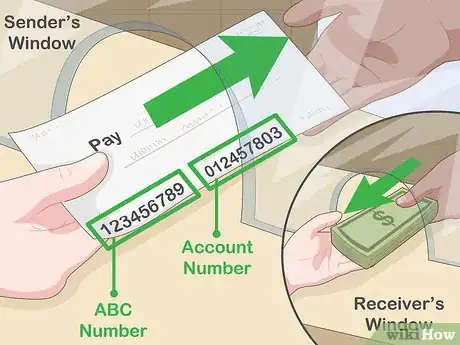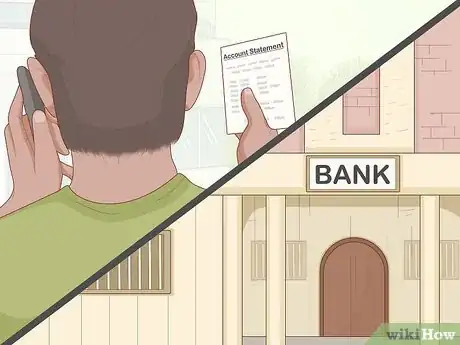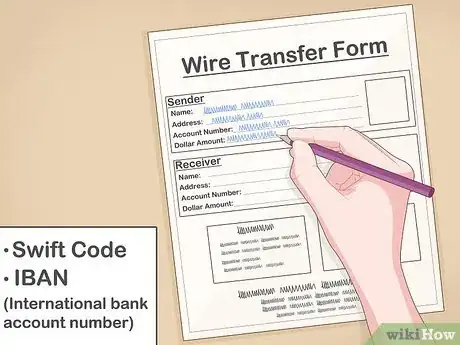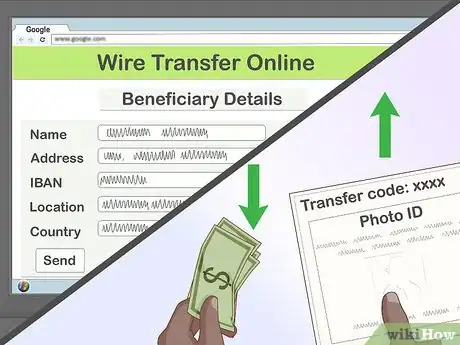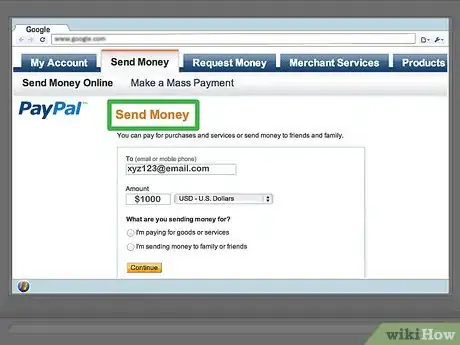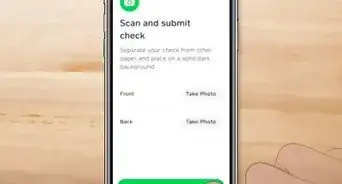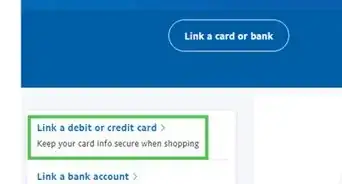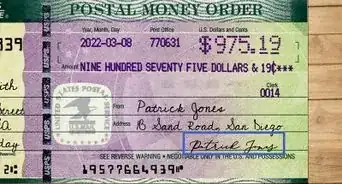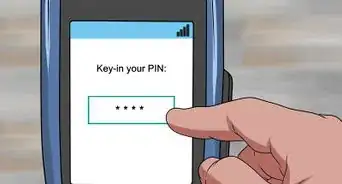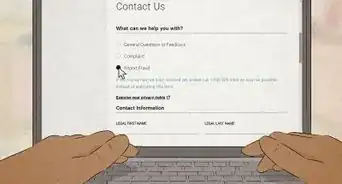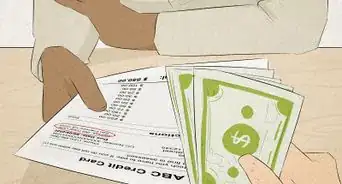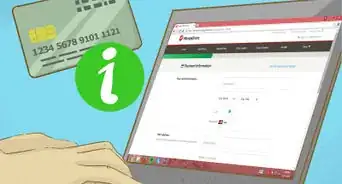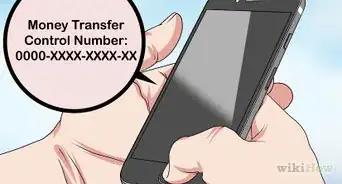This article was co-authored by Michael R. Lewis. Michael R. Lewis is a retired corporate executive, entrepreneur, and investment advisor in Texas. He has over 40 years of experience in business and finance, including as a Vice President for Blue Cross Blue Shield of Texas. He has a BBA in Industrial Management from the University of Texas at Austin.
wikiHow marks an article as reader-approved once it receives enough positive feedback. In this case, 81% of readers who voted found the article helpful, earning it our reader-approved status.
This article has been viewed 1,215,601 times.
One of the fastest ways to transfer money between two parties is to wire transfer money. A wire transfer allows you to send money quickly and securely. The sender is required to provide information about the bank or institution receiving the funds. While a wire transfer requires you to pay a fee, the funds can be moved within a day. Wire transfers can offer a reliable alternative to writing checks or sending money orders.
Steps
Sending a Bank-to-Bank Wire Transfer
-
1Learn about wire transfers. A wire transfer is an electronic method of transferring funds from one person or company to another. One common method of sending a transfer is from one bank to another. To send a wire transfer, the sender provides information on the receiving party’s financial institution to their own bank. Once the transfer is complete, the sender’s bank provides a confirmation number documenting the transfer.[1]
- Assume that Person A wants to send money to Person B. Person A would begin by submitting instructions to his or her financial institution. The instructions would typically include the recipient's bank name, ABA number, the recipient’s account number and the amount being sent.
- Bank-to-bank transfers require both the sender and the recipient to be account holders at their respective banks or credit unions.
- ABA stands for the American Banker’s Association. An ABA number identifies a specific federally chartered or state chartered bank or savings institution. The sender’s bank uses the ABA number to identify the receiver’s bank.
- The ABA number is the 9-digit number usually located on the bottom left corner of an account holder’s check. The number directly to the right of it is typically the account number. You can also find a bank’s ABA number online.
- Once the sender’s financial institution receives these instructions, they will send the funds to the recipient. The recipient will typically receive the funds on the same day.
- The sender is charged a fee of $20 to $40 for the transfer. The recipient may also be charged a fee.
-
2Process a bank-to-bank wire transfer. Check your funds. Verify that you have sufficient funds in your account to complete the transaction. You should reconcile your bank account before the transfer. Confirm any outstanding checks or deposits that have not posted to your account. Once you confirm your adjusted bank balance, you can send funds.[2]
- Deduct both the amount of the transfer and any transfer fees from your bank balance.
- Contact your bank or credit union. Depending on the services your institution provides, you may be able to access the forms you need online. If not, you will need to call or visit a local branch. If the process is new to you, call or visit a bank branch.
- Complete your bank’s wire transfer form. You will need to fill out information for both you as the sender and for the receiver’s bank. For domestic banks, this will include the ABA number and account number for the receiver’s bank. You’ll also need to indicate the amount you are sending.
- Show or verify any required identification information. Before sending the money to another account, a state issued ID (if wiring in person) or verification information (if wiring over the phone or Internet) will be required to complete the transaction.
- After your wire transfer is sent, your bank will provide a confirmation number to you. Keep in mind that banks process transfers in the order they are received. You may not receive confirmation immediately. The receiving bank’s wire transfer department needs time to process your transfer.
Advertisement -
3Complete an international wire transfer. For international wire transfers, you will need the receiving bank’s BIC (Bank Identifier Code). One common type of BIC code is a SWIFT code. Both of these codes refer to a unique identifier for a bank. For wire transfers within the European Union (EU), you will need the IBAN (International Bank Account Number). Ask your bank to assist you with this if necessary.[3]
- You will need to complete a transfer form. The form will require information about the sending bank and the institution that receives the transfer. Ask your bank to help you gather the information you need for the receiving bank.
- If you are sending a wire overseas, you may be dealing with a foreign language. Call or visit your financial institution to be clear about the detail of the transfer.
- An international transfer will require your transferred funds to be converted from one currency into another. Make sure that you understand the current exchange rates for the two currencies. If your transfer requires the bank to convert US dollars into Euros, for example, make sure that you understand the exchange rate. If not, you may be not transferring the amount you intend to move.
Processing a Cash Office Wire Transfer, Other Options
-
1Decide on a cash office. Sending a wire transfer through a cash office is different than a bank-to-bank transfer. No bank accounts are required to send or receive funds through a cash office. Instead of posting funds to a bank account, the receiver uses their personal identification and a confirmation number to access the funds.[4]
- Go to the office, call, or visit their website. Most retail wire-transfer companies offer services online and over the phone. Fees may vary depending on which way you contact the company.
- Check your funds. Once you confirm the fee you will pay, add the fee to your transfer amount. That total represents the amount you’ll need to provide to the cash office.
- Provide the information. You will need to give your address, the recipient’s name, and the payment destination. The company will give you a code that you will give to the recipient.
- The recipient presents the code when receiving the money, along with photo ID.
-
2Consider some alternatives. Banks and cash offices are two popular ways to transfer money electronically, but there are many others. It is important to explore your options to find the solution that works for you. You can consider money transfers or an online funds transfer service like PayPal.
- Look at an email money transfer. Some financial institutions, particularly large Canadian banks, offer email money transfers via a service known as Interact e-transfer. With Interact e-transfer, money is not actually transferred via email, but rather the recipient receives an email with a secret question.
- By confirming the email, the funds are send to the recipient's bank account, and the email acts essentially as an e-check.
- This is a highly convenient solution, since the sender simply needs the recipient's email address to initiate the transaction. In addition, there is no fee to the receiver, and the sender typically pays only between $1 and $4 dollars.
-
3Go over the PayPal system of sending funds. PayPal is a dominant and widely used method to transfer money electronically. With PayPal, the recipient is required to have a PayPal account. You can send funds through PayPal using a debit or credit card.[5]
- The receiver’s account is typically linked to a bank account. Once the funds post to the receiver’s PayPal account, the receiver can move the funds to a bank account.
- It normally takes several business days to move available PayPal funds to a bank account. While PayPal is convenient, it may take longer to move funds than a wire transfer.
- There are fees deducted from the funds you receive through PayPal. For smaller transfers the charge is 2.9% of the amount sent, plus $0.30 per transaction. Fees are typically higher for international transfers, and receivers should be mindful that an exchange rate would be charged on funds being transferred internationally. As the total dollars you send increase, the percentage fee on amounts sent will decline.
Expert Q&A
Did you know you can get expert answers for this article?
Unlock expert answers by supporting wikiHow
-
QuestionWhat should I do if my money was wired to a bank with the same name in a different state?
 Michael R. LewisMichael R. Lewis is a retired corporate executive, entrepreneur, and investment advisor in Texas. He has over 40 years of experience in business and finance, including as a Vice President for Blue Cross Blue Shield of Texas. He has a BBA in Industrial Management from the University of Texas at Austin.
Michael R. LewisMichael R. Lewis is a retired corporate executive, entrepreneur, and investment advisor in Texas. He has over 40 years of experience in business and finance, including as a Vice President for Blue Cross Blue Shield of Texas. He has a BBA in Industrial Management from the University of Texas at Austin.
Business Advisor Contact the issuing bank of the wire transfer with the Federal Reference Number you received when arranging the transfer. You will need to provide the intended receiving bank's ABA or SWIFT number and the dare of the transaction as well. The issuing bank can track the transfer and take any corrective action needed.
Contact the issuing bank of the wire transfer with the Federal Reference Number you received when arranging the transfer. You will need to provide the intended receiving bank's ABA or SWIFT number and the dare of the transaction as well. The issuing bank can track the transfer and take any corrective action needed. -
QuestionIs a money order available immediately to spend?
 Michael R. LewisMichael R. Lewis is a retired corporate executive, entrepreneur, and investment advisor in Texas. He has over 40 years of experience in business and finance, including as a Vice President for Blue Cross Blue Shield of Texas. He has a BBA in Industrial Management from the University of Texas at Austin.
Michael R. LewisMichael R. Lewis is a retired corporate executive, entrepreneur, and investment advisor in Texas. He has over 40 years of experience in business and finance, including as a Vice President for Blue Cross Blue Shield of Texas. He has a BBA in Industrial Management from the University of Texas at Austin.
Business Advisor
References
About This Article
To wire transfer money using a bank to bank transfer, call or visit your bank or credit union. To do the transfer, you will need the recipient’s full name and their 9-digit ABA number. Another option is to wire transfer money using a cash office. To do this, visit their website or call to determine fees, and prepare to give your address and some information about the recipient. Bring enough funds to cover the fee as well as what you plan to send. For tips from our Financial reviewer about how to transfer funds internationally, read on!
